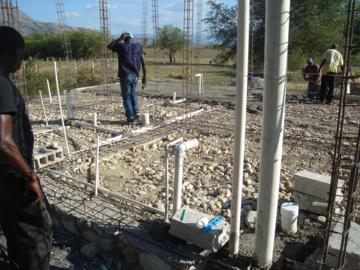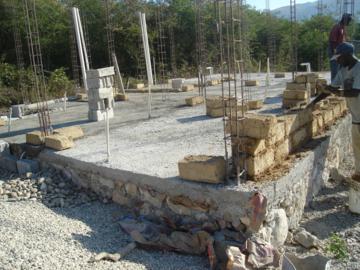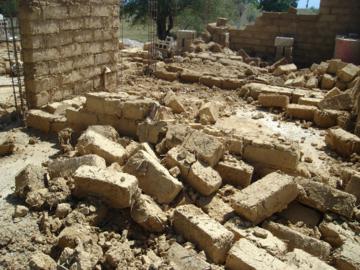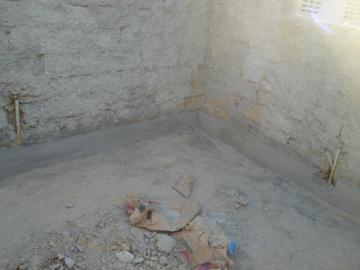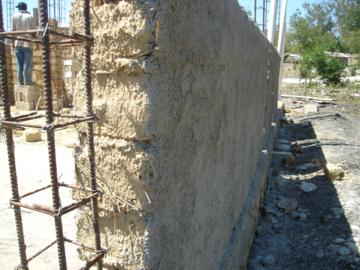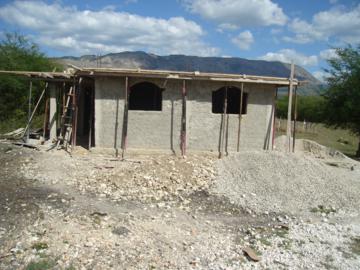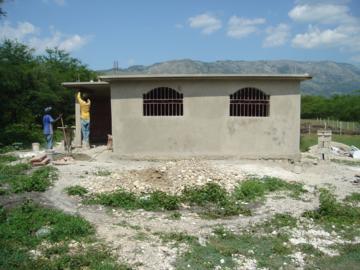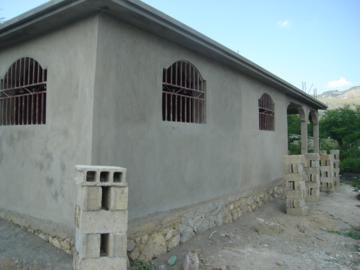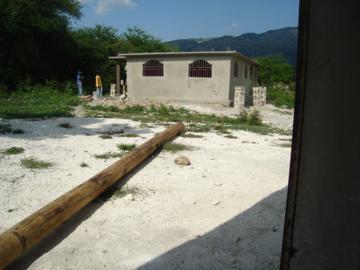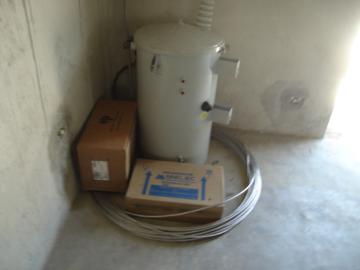Works on the house went on after the departure of the G.H.A. team.
Plumbing and electrical features are outlined. Once the soil finished, the adobe bricks are set up using clay as binding agent.
The walls are going up rapidly.
The rainy season approaching, precautionary measures have to be taken to preserve all the masonry work. Using earth as building material requires “good boots and a good hat” because if some of the clay is found to be mixed with water, cohesion disappears. That is what the working team learnt to its cost.
Fortunately, the blocks can be remade. The clay just had to be recuperated. But 15 additional working days were necessary for that. To prevent such mishap, a 2-cm thick and 10-cm high course, made of highly packed cement, will then be applied along the lower part of the walls. This technique will prove to be quite efficient during the next storm.
For security measure, a fine coating made of cement will be temporarily applied on the walls. This coating will be later pricked to let the bricks breath.
As for the roof, the proposition of a concrete slab has been held for two reasons:
- Strong resistance in case of tornadoes
- The possibility to add a second floor in the future.
The roof has been poured. The house is now protected from the rain.
As all this work goes on, the 2-literacy classes are opened and lessons are taking place everyday
A mixture of lime, sand, and concrete is used as a last coating inside and outside the house.
Mirebalais enjoying the privilege of being located close to an hydroelectric dam, the whole buildings will be connected to the public electrical network.
It will then be necessary to get a transformer to assure this connection.
The last step will be the cleansing.
